Adding some additional context to this question. In some circumstances it makes sense to Scan the table to obtain the live item count. However, if this is a frequent occurrence or if you have large tables then it can be expensive from both a cost and performance point of view. Below, I highlight 3 ways to gain the item count for your tables.
1. Scan
Using a Scan requires you to read every item in the table, this works well for one off queries but it is not scalable and can become quite expensive. Using Select: COUNT will prevent returning data, but you must still pay for reading the entire table.
Pros
- Gets you the most recent item count ("live")
- Is a simple API call
- Can be run in parallel to reduce time
Cons
- Reads the entire dataset
- Slow performance
- High cost
CLI example
aws dynamodb scan \
--table-name test \
--select COUNT
2. DescribeTable
DynamoDB DescribeTable API provides you with an estimated value for ItemCount which is updated approx. every 6 hours.
The number of items in the specified table. DynamoDB updates this value approximately every six hours. Recent changes might not be reflected in this value. Ref.
Calling this API gives you an instant response, however, the value of the ItemCount could be up to 6 hours stale. In certain situations this value may be adequate.
Pros
- Instant response
- No cost to retrieve ItemCount
- Can be called frequently
Cons
- Data could be stale by up to 6 hours.
CLI Example
aws dynamodb describe-table \
--table-name test \
--query Table.ItemCount
DescribeTable and CloudWatch
As previously mentioned DescribeTable updates your tables ItemCount approx. every 6 hours. We can obtain that value and plot it on a custom CloudWatch graph which allows you to monitor your tables ItemCount over time, providing you historical data.
Pros
- Provides historical data
- Infer how your ItemCount changes over time
- Reasonably easy to implement
Cons
- Data could be stale by up to 6 hours.
Implementation
Tracking DynamoDB Storage History with CloudWatch showcases how to automatically push the value of DescribeTable to CloudWatch periodically using EventBridge and Lambda, however, it is designed to push TableSizeBytes instead of ItemCount. Some small modifications to the Lambda will allow you to record ItemCount.

